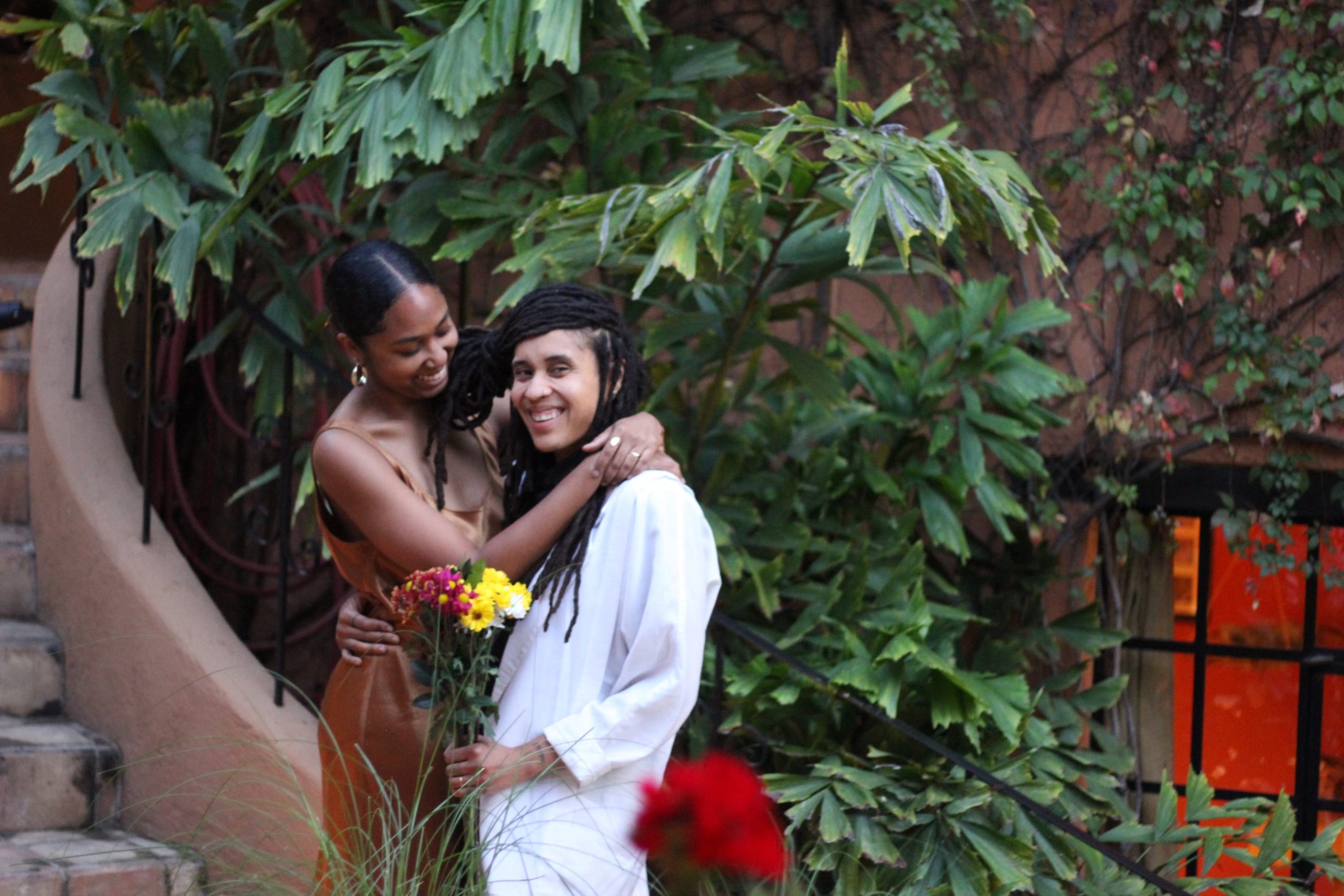As part of our Art + Love series, zakkiyyah najeebah dumas-o’neal and Ciera McKissick reflect on their origin story, the evolution of their collaborations, and the spaces that helped nurture their love.
They received several nominations from people who love their love, including one anonymous admirer who wrote, “They are individual powerhouses and uplift each other as a couple.”
This is their story.
On where it all started:
zakkiyyah najeebah dumas-o’neal: I feel like if you ask each of us, there might be a different story about how we met.
Ciera McKissick: I remember the Black Girl In Om days, an event called Seeds, but I don’t think that was the first time. That was around 2014 or 2015, when we met.
zndo: I remember us meeting because you were hosting a jazz night in Pilsen?
CM: The Jazz Series! That’s how we met and you came to the event?
zndo: Yeah, I came with my friend at the time. We both just popped up cause we were looking for something to do on a Friday night. That’s how I met you, if we’re getting technical, but we didn’t start dating until many years later, of course.
CM: Yes, we have been friends or in the same social circles for a very long time, but there was a distinctive moment at an early Party Noire in 2015, which introduced us in a more intimate way—but we never talked about it! We just kind of moved on with our lives, but had always been in each other’s lives in some capacity and within the art circles of Chicago, or in professional ways. I always had a crush on you.
zndo: Honey, that’s so sweet. There was always an energy between us. But between 2014 and 2019, we were both always separately in other relationships. It wasn’t until the Fall of 2019 that we officially started dating.
CM: I finally confessed that I had a crush on her late one night over gin and a really bad movie after several struggled attempts!
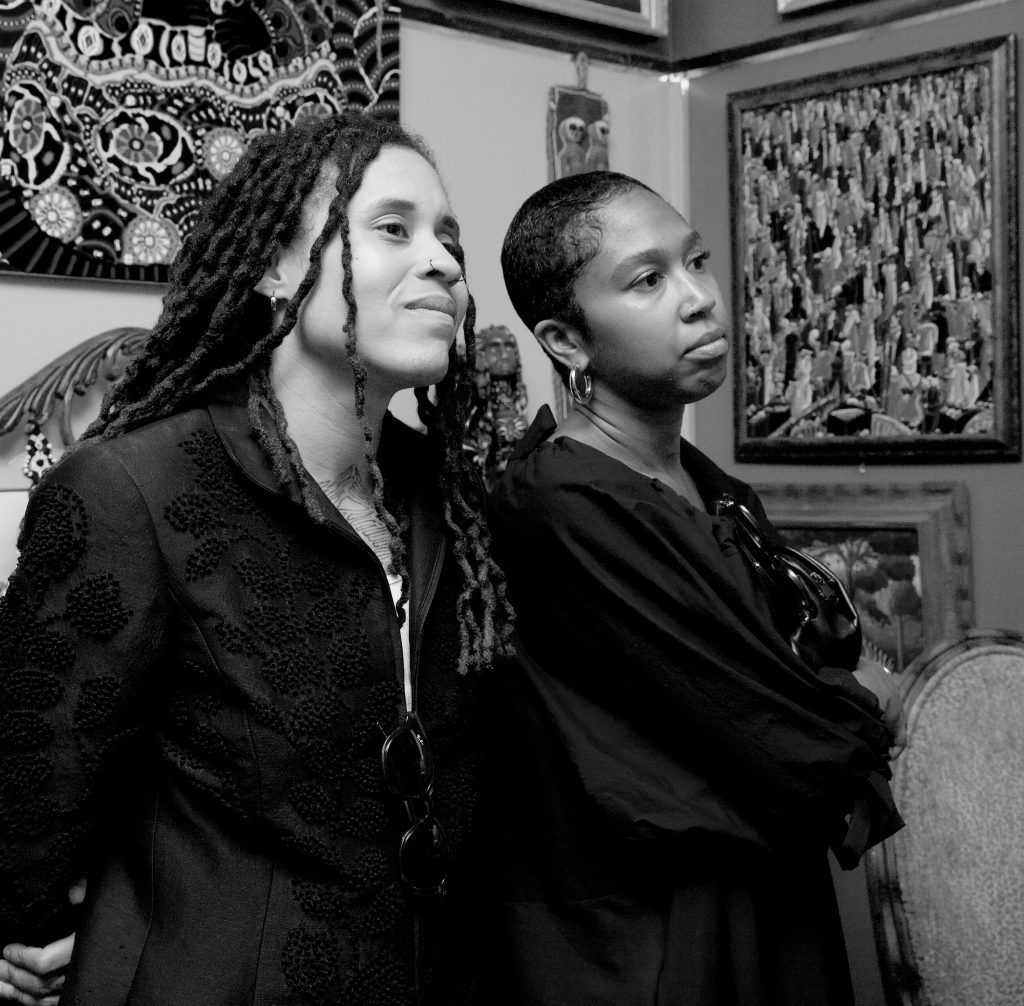
On one another’s process and practice:
zndo: I would say beyond Ciera having just an artistic practice, I feel like she has more of a community-rooted practice. The foundation of her work heavily involves building relationships with folks and there’s something about that process that I always really respect and admire. She puts a lot of care and generosity into the ways that she works with artists or people, in general.
She’s also been working with some of the same artists since the beginning of her career, and I think that’s really special because it shows her investment and commitment to those relationships. This way of working also translates into other parts of her life. [One] of my favorite things about her work is that she has real and genuine strength in bringing people together. With the Feast festival she used to organize—I would identify that as a food justice effort—she had been doing that work for years before a lot of the mutual aid food efforts over the pandemic. It just speaks to the ways that she values people, and I don’t often see those intersections in the arts. I mean, the way I got to know her before anything was by going to her events.
The way she engages with the community is also very intergenerational, too. I’ve noticed she’s able to connect with elders in the same way that she can connect with artists that are our age or younger. She has this really beautiful way of bringing people together from different backgrounds and different ages, and just making people feel seen and special. She has this curiosity, levity, and openness to receiving artists and collaborators as they are. The same way she talks and interacts with her artists is the same generosity and compassion she carries with people in her everyday life—from people on the street, to folks she meets for the first time. She can literally walk up to anyone, talk to them, ask them a question and get to know them outside of her ego. I love that about her! I’m not always able to do that and can be more socially anxious about approaching people. As her partner, I value it as something really special and might be indicative of her journalist background.
From a cultural standpoint, thinking about her work and practice, I believe that’s why she’s able to work with many diverse groups of people in many different ways. She’s just fucking cool and is effortlessly herself when she does the work. She just wants to do the work and connect, and I love being a witness to that.
While all of the work is beautiful and attractive to people on the outside, which is the effect of Ciera, she puts a lot of blood, sweat, and tears into her projects, whether it’s curating a show, putting on an event, or collaborating with an artist. I don’t know if people realize that she herself is a team of six people and will always find a way to get shit done, no matter the occasion. I remember the first time I went with her on one of her “runs” to prepare for an event—picking up a truck, back and forth to her storage unit, driving around to collect work from artists, packing up equipment, making runs to gather materials. I mean, just doing it ALL. I was like, “YOU do all of this?!” The labor of it all can be very concerning as a partner who wants to see her thrive, but also rested. Overall, I respect her determination and the ways she’s a genuine connector—it’s on another level.
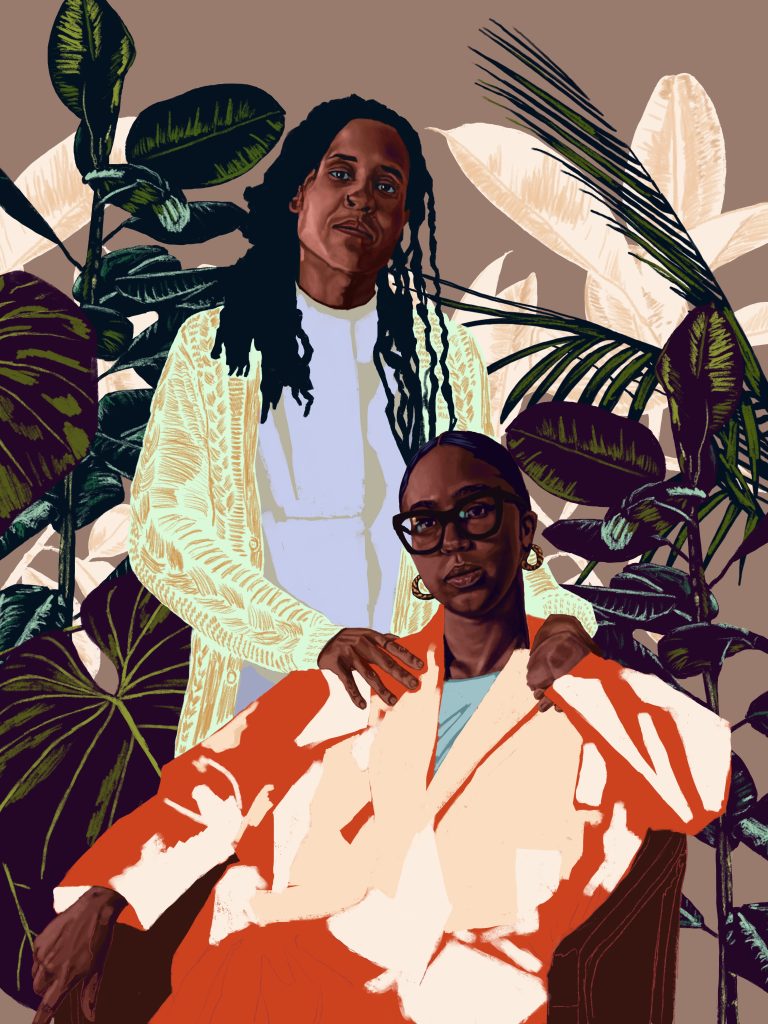
CM: What I’ve always admired and loved about zakkiyyah is her brain—it’s like this large amoebic sponge and she’s constantly craving and seeking out knowledge and trying to delve deeper into a topic, an artist, or a filmmaker when she’s working. She gets these obsessions. This insatiable need to continue down a path so she can learn everything about a particular topic. It’s quite interesting. She knows a lot about a lot of different, obscure things that not a lot of people would know and I’m in awe of how she’s able to retain all of this information in such a small body. She doesn’t consider herself an academic, but I very much do consider her a scholar in my eyes, and I’m sure that many other people do because of her desire for knowledge, the way she carries conversations, and the way she reads so much to inform her work. Part of her process is constantly buying books, reading articles, listening to podcasts, and watching YouTube talks. This way of thinking and doing incorporates itself into her work. Oftentimes I feel like her work is the research that turns into a film video project, photo, or a physical process of her making with her hands.
I first came to know zakkiyyah through art and her beautiful portraits of Black women. I think that speaks to how she views the world, herself, and others. She really tries to instill that beauty and honor within the lives and images of Black people or culture—and even when she’s not photographing Black people. She [has very strong convictions] about Black identity though, in its many forms and that has been so inspiring to me as someone who is discovering what that means to myself. Being able to listen in on conversations and be a witness to how she views Black culture and people has really made me feel deeper and closer to myself as a Black woman. There’s also a certain element of storytelling that is inherently there and how she chooses to honor, revere, and hold space for people’s stories and the things that we may not know just by looking. She has this way of seeing people in vulnerable states and making them look beautiful, honest, and soft. I think that that is really the crux of the work—it’s the lens [through] which she sees things that is probably the largest component of why her work is so great.
She works in different media and constantly pushes herself to question, hone in on, and expand her practice. When she started doing the charcoal series around Lorraine Hansberry’s writing, she was like “I want to work with my hands. I wanna feel it in my body and be more in the work.” I’m also really curious and excited to see the trajectory of her journey and her career not just as her partner, but also as a person who works with artists.
I’ve been able to be a sounding board, to hear the inklings and the percolating behind the scenes, and then seeing it manifest in real time has been a wonderful privilege. To know that not a lot of people get to see the real deep true side of her. She presents herself as a very put together person, not to say that she isn’t, but there is a lot of thought, intention, questioning that goes into her work and I think that that’s a great way to start and lean into something.
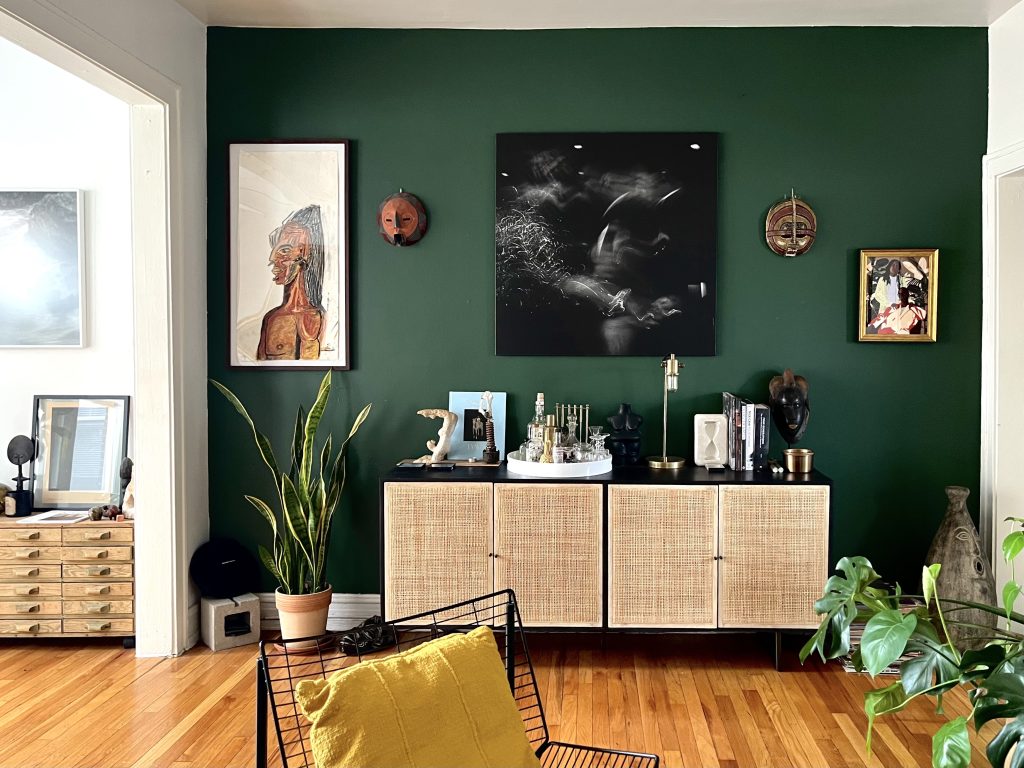
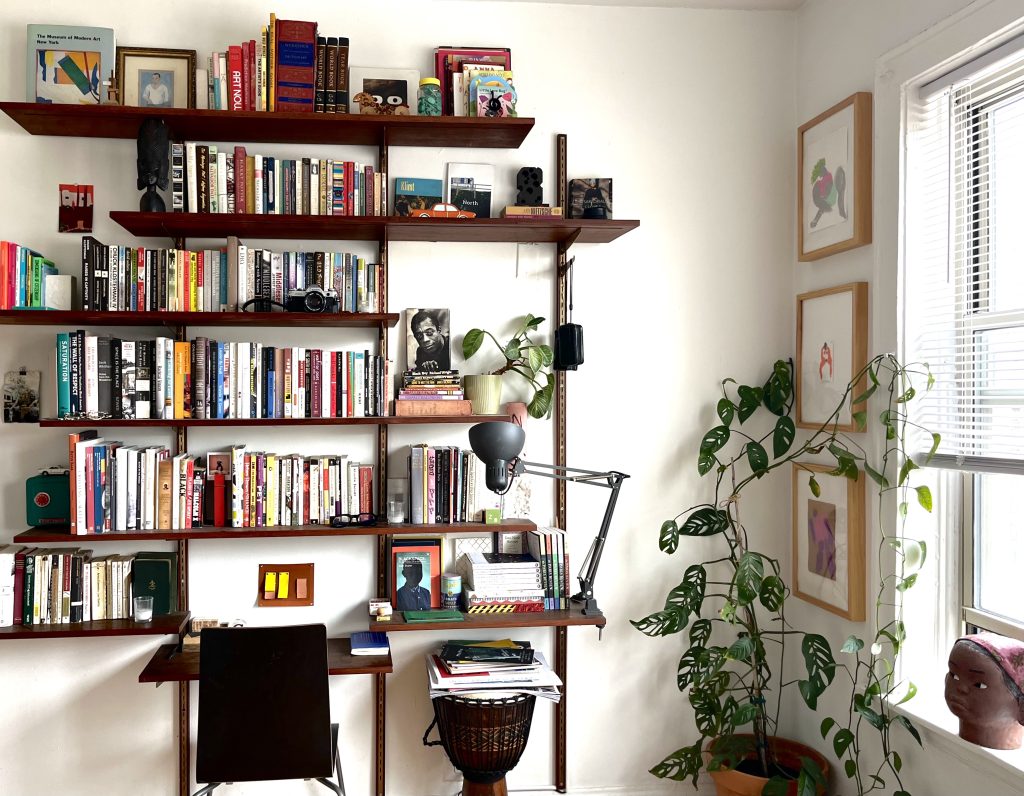
On sharing space:
CM: Well, we are currently sitting in our home office together. It’s our first apartment together and we’ve been here for two years now. It’s nice to think of her as a colleague in the office. I have a desk across from hers and we face our backs to each other, but we also interchangeably use the desks…
zndo: …actually we never really use this room, let’s be honest about this. The desks are used for books and things that we can’t fit anywhere else but we have definitely worked in this office together when we’re able to. I would also say our home space in a lot of ways does feel like a collaborative space that we’ve put a lot of time and work into.
CM: Yeah, I mean we have both beautified the space. We’ve gone to a LOT of estate sales, collected things, and have brought in objects from our travels.
zndo: We’ve really been very intentional about not just the way we want to live together, but how to be in a space together, and how to adorn our space together. Aesthetics and beautification within our living space has been very important to us, so that when I walk into our home it feels like my home, it feels Ciera’s home, but ultimately like us both.
CM: This was like a curatorial collaboration and project together. I mean, we both are curators, avid art collectors, have a lot of objects, a lot of books, and collected records before we even moved in together. We made a mood board and created a Google Jamboard for each room with colors and objects and things, so I think that that’s just a true testament to our practice coming into our space.
zndo: I like to feel inspired being at home. Personally, and for both of our practices, I don’t know if Ciera can say the same, but I think being at home in a space that’s visually inspiring, beautiful, and very reflective of who I am and who we are makes it really great for thinking, planning, dreaming, resting, and slowing down—at least when we can because we’re very busy people. I would say our apartment is like our first big collaborative project and we have another big collaborative project coming up.
CM: Our next intentional space will probably be our wedding! We got engaged a bit ago and are in the process of planning. We’re excited cause it’s going to be a celebration of each other and our lives together moving forward.

On collaborating with one another:
CM: With both of us being curators and artists, so to speak, we have collaborated in some ways. I have curated zakkiyyah into some exhibitions and I also curated a solo exhibition for her called We cannot be comprehended except by our permission, which was borrowed from a Nikki Giovanni poem. I really tried to get Nikki Giovanni there, a friend of mine knows her, needless to say it did not happen! I feel like that exhibition was a really beautiful part of our chapter. There was some intimacy within being able to curate that show. It was when we were in the very early stages of dating, and was planned before we got together. I felt a bit nervous because the show was so personal and included a lot of ephemeral work that was close to her—things that dealt with her family, her perception of self—and aside from her being an artist, she was now a partner, which just made me really want to do a good job! It was a beautiful show. We worked really late nights to get everything up and on the walls. We had a lot of fun with it and I think that you could see that care, intention, and intimacy in the show.
zndo: Yeah that was a really intense time for a lot of reasons. We were both going through a lot of personal transitions in life and I was experiencing an artistic transition within my practice and honestly having an intellectual crisis about the future of my work, and the direction I wanted to go in. There was some of insecurity around my practice and how people viewed it, but it was a beautiful moment for us together because I was able to not only work with her as a curator and as her girlfriend in the early stages, but was interesting to kind of create that separation of when to be a girlfriend, and be a partner, and knowing when to be collaborative in a way that is fully focused on the work and the project, and not take anything personal. Especially as a new couple! You’re feeling everything everywhere all at once and working together.
I feel like one of the first times we collaborated in an intentional way was when I curated a show in 2019 called Relearning with Mentions, which was an exhibition that I organized at the Chicago Art Department with Black artists that were exploring the topic of family and or utilizing the family archive. I forgot why I was at your house, but I went to your apartment to get something or pick something up, and I remember we had tea that day or you made me a cup of tea? I was sitting in her kitchen and I saw this wood piece on the wall with burnt text on it and I was like, “this text is so beautiful, this is so poetic—who made this?” And she was like, “I made this.” I was kind of shocked because I never knew her to have an art practice. And the words were so compelling with the way they were composed. So I asked her more about that work and it was text that was taken from what I think was your grandmother’s personal diary. I felt that it fit so perfectly with the show I was working on, and asked you if you’d be open to making more of them. I was drawn to the work and I think it also made me realize that this was someone who really honors the matriarchs in her life, thinking a lot about the closeness she has with her mom, how close she was with her grandmother and great-grandmother. I felt it would be really special to include that work in the show. That was before we were dating, actually, but I think it was in the process of curating that show and learning more about her and her relationship to her family that really just kind of opened my eyes to who she was outside of AMFM and her visibility within the community. I had an opportunity to see her as a human who is very compassionate, caring, and very soft. It also translated into the work for that show. I hope that she continues to work on that project soon, because it was a really beautiful and honest set of works.
CM: It was my first time showcasing my own artwork. I remember being so nervous having to be on the opposite side of the wall. I’m glad that she thought that my work was good enough to want to ask me to participate.
zndo: Especially not initially knowing that it was you that made the work—that’s what was surprising. I didn’t know that you made art!
CM: Not a lot of people do. I don’t really have time either!
zndo: Bringing people together is something that we both love individually, but it feels good when you have a partner who also loves bringing people together and being in community, even if it’s just organizing bonfires, picnics, outings with our friends, or hosting people at our home. It always feels very collaborative, and I will admit it is kind of fun planning for those things, to think through the ways that we want to share space with people and being very intentional about the experience we want people to walk away with, even down to the details of what food we’re going to have, the tone, what to drink. We really care about how we invite people in and how we spend time with them when we’re able to.
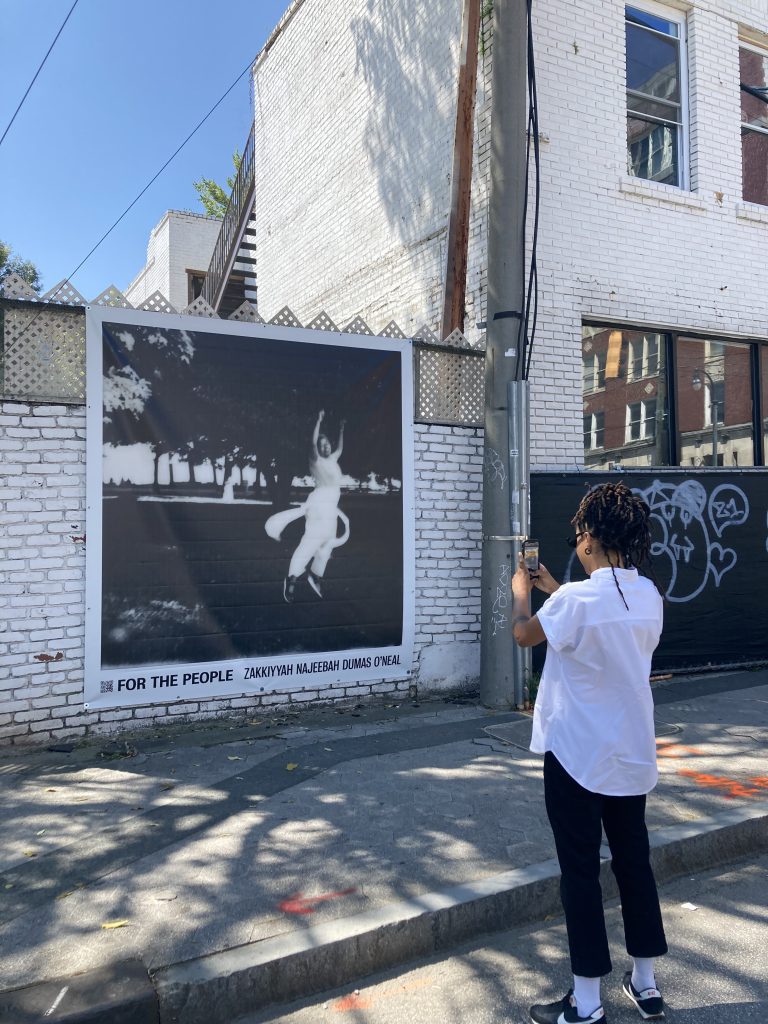
On how their process and practice have been influenced by one another:
CM: zakkiyyah has definitely influenced my practice and my work to be more thoughtful and intentional. Her desire to know more and dive deeper rubbed off on me in a lot of ways. I’m a very curious person, but the fact that we have a library of academic books and nonfiction across a range of different topics and I am able to come to her with my questions and thoughts to work with her critically in that way around some of my concepts, ideas, and dreams has been such a blessing. I definitely have seen it show up in my work. My exhibition Relic, in particular, was the first exhibition that I was able to spend a long time planning, incorporating research, reading and building a website, and writing an essay. Thinking critically through how the work is in conversation with one another, in a historical and contemporary way, was a result of her rubbing off on me in some capacity. I went to her with my concept and asked, “What books do you think I should read or know?” And she was like, “I got you,” took me to the bookshelf and gave me a stack of books. I felt like she was just a wonderful guide to help me frame my thoughts and my process. Oftentimes we’ll reciprocally bounce ideas off of one another which sometimes can be a great thing, but we have talked about boundaries within our own practices and how that’s manifested, too.
zndo: Ciera is an air sign, I’m an earth sign—very important to know for anyone reading this! I tend to be the kind of person who doesn’t like to take risks. I like to be in my comfort zone, to feel grounded, firm, and convicted. I like to know what the projected outcome of something might be. I feel being with her and how she carries her curiosity and playfulness, there’s this way of spontaneity that has definitely encouraged me to be more improvisational and playful within my work—to not always take myself so seriously and to be open to experimentation. I tend to be very referential in terms of what I’m reading, thinking, and what music I’m listening to. I feel like in a lot of ways she’s encouraged me to be referential in a different way. To think more about the world in terms of what I’m seeing, feeling, and intuitively inspired by. Also that art doesn’t always have to be this thing that is dense and complicated, but just meet you where you are and allow that to inspire you in childlike ways through wonderment. I see that in the ways that she engages with artists and art. I think there’s sometimes tension when we don’t always have the same philosophical viewpoints when it comes to politics, identity, aesthetics, art practices, and ways of seeing. But I do find that our differences have also helped us grow with each other. We’re able to see each other’s perspectives, even when we don’t always understand. She’s the first person I go to when I have an idea or can’t get an obsession out of my head.
She’s a curator, programmer, gallerist, and art dealer, and because my identity roles also intersect with all of that, we have to be very particular about when it’s appropriate or when it makes sense for us to collaborate, and for our ideas to bounce off one another. We’re pretty good at being communicative about that.
Ultimately I think it’s really beautiful that I can come home everyday and talk through things with her about my work and she’s able to empathize with me or understand me because we’re both in the throes of this community with intersecting worlds. We’re on each other’s team all the time, constantly, and it’s been a blessing to share all of that with her.
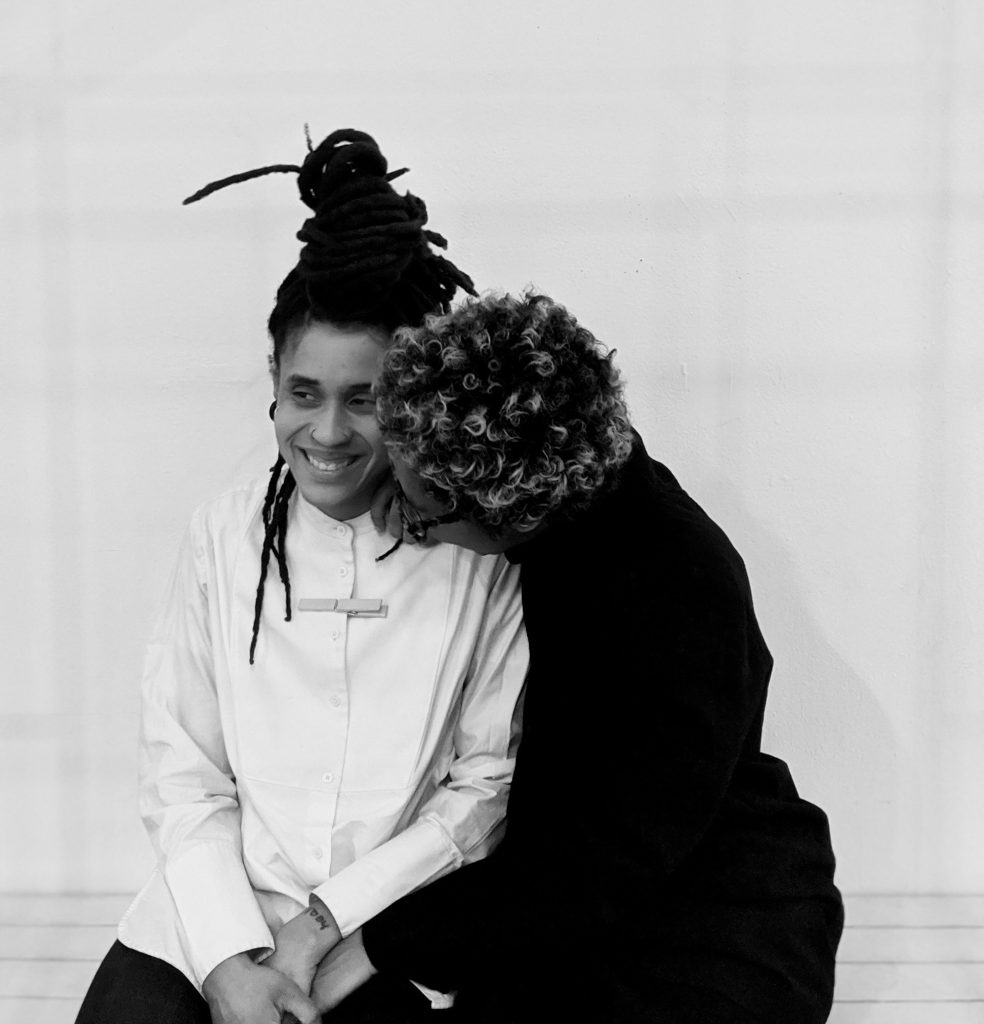
On the song that reminds them of one another:
zndo: “Let Me In Your Life” by Bill Withers or really anything by Roberta Flack. This Withers song is really special because we’d watched several of his live performances together during the pandemic when he passed away in 2020, and I remember when the live version of this one came up on the queue, we just started slow dancing and crying to it together. It’s been one of our songs since then.
CM: I definitely was going to say a Bill Withers or Roberta Flack song too! Or Ari Lennox’s “Up Late.” She knows why.
…and one more thing:
zndo: She’s the best cook!! My favorite meals are by her, and I want people to know she makes the BEST hummus.
CM: I always say if I wasn’t doing art and programming stuff, I would have wanted to go to culinary school! About z…she is, honestly, so goofy! I feel like I get to see this different side of her. She can be quite serious in public, but on the real-real, she is incredibly strange and funny and beautiful—and I love her for that. I feel a child-like joy when I’m with her, and we are so silly sometimes. Like two big kids. I love that.
About the Author: Tempestt Hazel is a curator, writer, and co-founder of Sixty Inches From Center. She spends her time working alongside artists, organizers, grantmakers, and cultural workers to explore solidarity economies, cooperative models, archival practice, and systems change in and through the arts. You can see more of her editorial, curatorial, and other projects at tempestthazel.com.
